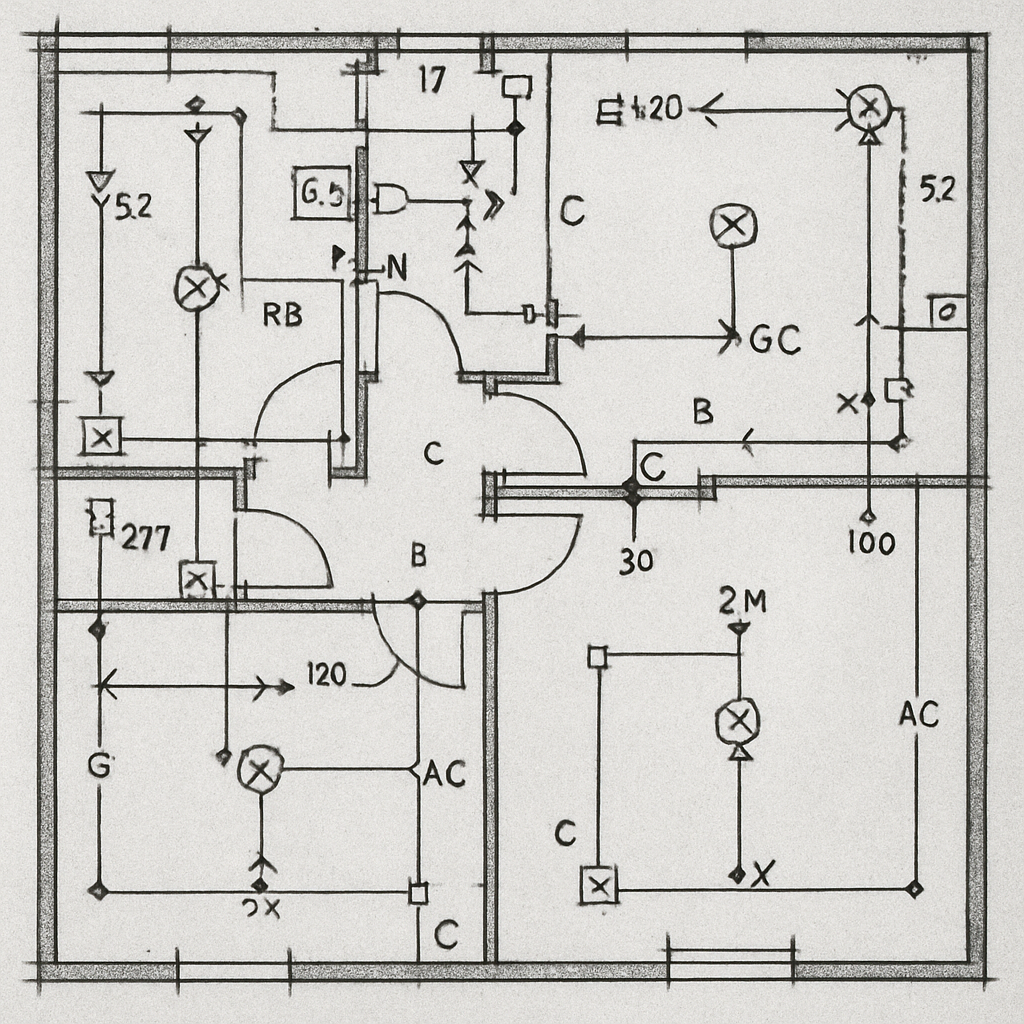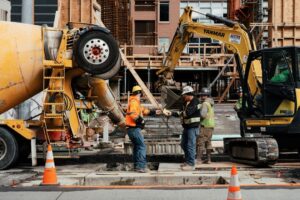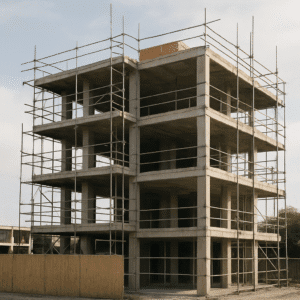
Understanding the LADBS Electrical Permit Process
In this guide, we’ll walk you through what an electrical permit is, why you need one, and how to apply for it through the LADBS. By understanding these key elements, you can streamline your project planning and execution, ensuring that your electrical work is carried out efficiently and without unnecessary delays. Moreover, being well-versed in the permit process can save you from potential legal issues and financial penalties down the line.
An electrical work permit is an official document issued by the LADBS that authorizes electrical work to be performed on a property. This permit ensures that the work is in compliance with building codes and safety standards, protecting both the property owner and the community. It serves as a formal agreement between the property owner and the city, guaranteeing that the work will be performed according to strict safety protocols and regulations.
Having an electrical work permit is not only a legal obligation but also a mark of professionalism and diligence. For contractors, it demonstrates a commitment to adhering to industry standards and providing quality service. For homeowners, it offers peace of mind, knowing that the work being done is safe and up to code. In both scenarios, the permit acts as a safeguard against potential electrical hazards and future liabilities.
Why Do You Need an Electrical Permit?
Electrical work can be dangerous if not done correctly. Permits are required to ensure that all electrical installations meet safety standards and building codes. This not only prevents accidents and potential hazards but also ensures the integrity of the property’s electrical system. Additionally, having the proper permits can be crucial when selling a property, as unpermitted work can lead to complications during the sale process.
The importance of obtaining an electrical permit cannot be overstated. It serves as a critical checkpoint for ensuring that all work is carried out safely and effectively. Without a permit, any electrical work done could be deemed illegal, resulting in fines and the potential need to redo the work at your own expense. Moreover, permits are an essential part of maintaining property value; unpermitted work can significantly decrease a property’s marketability and lead to costly legal disputes.

Types of Electrical Permits
The LADBS issues different types of electrical permits depending on the nature and scope of the work. Common types include:
- New Installation Permit: For new construction or major renovations. This type of permit is essential for ensuring that all new electrical systems are integrated safely into the existing infrastructure. It covers the installation of new wiring, panels, and any other components necessary for a new build or extensive renovation.
- Alteration Permit: For changes to existing electrical systems. This permit is crucial for upgrades or modifications to current electrical setups, such as adding new circuits or upgrading service panels. It ensures that these changes meet current safety standards and do not compromise the existing system’s integrity.
- Repair Permit: For fixing faults or damage in current systems. This permit is necessary when addressing electrical issues that arise from wear and tear or unexpected damage. It ensures that all repairs are conducted safely and do not introduce new risks to the property.
When Is a Permit Required?
A permit is generally required for any work that involves installing, altering, or repairing electrical systems. This includes tasks like adding new circuits, installing new outlets, or upgrading service panels. Minor repairs, such as replacing a light switch or socket, typically do not require a permit.
Understanding when a permit is required is crucial for compliance and safety. Any significant electrical work that impacts the overall system’s functionality or safety will necessitate a permit. This includes installing new lighting systems, expanding electrical capacity, or integrating renewable energy sources. However, for minor tasks that do not alter the system’s structure, such as replacing a fixture or repairing a malfunctioning outlet, a permit is generally not needed. It’s always advisable to consult with LADBS or a licensed professional if you’re uncertain about whether a permit is necessary for your project.
How to Apply for a LADBS Electrical Permit
Applying for an electrical permit with the LADBS can be done online or in person. Here’s a step-by-step guide to help you through the process:
Step 1: Prepare Your Documentation
Before applying, ensure you have all necessary documentation. This might include:
- Detailed Plans: Drawings or blueprints of the proposed work. These documents provide a visual representation of the intended work, ensuring that all parties involved understand the scope and specifics of the project.
- Scope of Work: A description of the electrical work to be performed. This outlines the details of the project, highlighting what will be installed, modified, or repaired, and serves as a critical reference throughout the permit process.
- Contractor Information: If you’re hiring a contractor, their details and license number. This information is essential for validating that the work will be performed by qualified professionals who are authorized to operate within the city.
Having all your documentation in order is the first step towards a smooth application process. Incomplete or inaccurate information can lead to delays and complications, so it’s vital to review everything thoroughly before submission. Additionally, having a well-prepared application demonstrates professionalism and facilitates quicker approval.
Step 2: Submit Your Application
Applications can be submitted through the LADBS website or at a local office. Online applications are often faster and more convenient. Here’s how you can do it online:
- Create an Account: Register on the LADBS website if you haven’t already. This account will be your portal for managing your application and communicating with the department.
- Fill Out the Application: Complete the online form with your project details. Ensure that all information is accurate and corresponds with your documentation.
- Upload Documents: Attach your plans and any other required documents. The online system allows for easy document management and ensures that all necessary paperwork is submitted.
- Pay the Fee: Submit payment for the permit application fee. This step finalizes your application submission and initiates the review process.
Submitting your application accurately and efficiently can significantly impact the processing time. Utilizing the online system streamlines the process and allows for easy tracking of your application’s status. It’s crucial to ensure that all information is correct to avoid unnecessary delays or rejections.
Step 3: Plan Review and Approval
Once submitted, your application will undergo a plan review. This is where the LADBS checks your plans against local building codes and regulations. If everything is in order, you will receive approval. If not, you may need to make revisions and resubmit your plans.
The plan review process is a critical step in ensuring compliance with all safety and building regulations. During this phase, any potential issues or discrepancies will be identified, allowing you the opportunity to address them before work begins. This review not only protects your interests but also ensures that the project will be executed safely and in accordance with legal standards.
Step 4: Obtain Your Permit
After approval, you will be issued an electrical permit. This document must be displayed at the job site throughout the duration of the work. Displaying the permit is a legal requirement and serves as proof that the work being done is authorized and compliant with local regulations.
Having the permit on-site is crucial for transparency and accountability. It signifies that the project has been vetted and approved, providing assurance to inspectors, contractors, and property owners alike. Ensuring that the permit is always accessible can prevent interruptions and facilitate smooth inspections.
Inspections and Final Approval
Electrical work must be inspected by an LADBS inspector to ensure compliance with the approved plans and safety standards. Here’s how the inspection process works:
Scheduling an Inspection
Once the work is ready for inspection, you can schedule an appointment through the LADBS website or by phone. It’s important to schedule the inspection at the right time, typically before the work is covered or concealed.
Timely scheduling of inspections is essential for keeping your project on track. Inspections should be planned for critical phases of the project to ensure that all aspects of the work comply with the approved plans. Proper coordination with the inspection schedule can prevent delays and ensure that any necessary corrections are identified and addressed promptly.
What to Expect During an Inspection
During the inspection, the inspector will examine the work to ensure it meets all safety and code requirements. They will check the installation, materials used, and verify that the work matches the approved plans.
Inspections are a thorough process designed to uphold the highest safety standards. The inspector will evaluate the quality of workmanship and adherence to safety protocols, providing invaluable feedback and guidance. It’s an opportunity to ensure that the project meets all necessary regulations and avoids future complications.
Final Approval
If the inspection is successful, you’ll receive final approval, and the permit will be closed. If there are issues, the inspector will provide a list of corrections needed. Once these corrections are made, you can schedule a re-inspection.
Receiving final approval signifies the successful completion of the project in compliance with all regulatory requirements. It is the final step in validating the quality and safety of the work done. If corrections are needed, addressing them promptly is crucial for achieving final approval and closing the permit officially.

Common Mistakes to Avoid
To make the process as smooth as possible, here are some common mistakes to avoid:
- Not Getting a Permit: Skipping the permit process can lead to fines, rework, and legal issues. It’s essential to recognize the importance of permits and adhere to the process for legal and safety reasons.
- Inadequate Documentation: Ensure all documents are complete and accurate to avoid delays. Preparation and attention to detail in documentation can save time and prevent unnecessary complications.
- Ignoring Plan Reviews: Address any feedback promptly to move the process along. Taking the plan review seriously ensures that potential issues are resolved early, facilitating a smoother project execution.
Avoiding these common pitfalls can significantly impact the success of your electrical project. Being proactive and attentive at each stage of the permit process ensures compliance and fosters a more efficient workflow.
Conclusion
Understanding and navigating the LADBS electrical permit process is essential for anyone involved in electrical work in Los Angeles. By following the outlined steps and ensuring compliance with local codes and standards, you can complete your electrical projects safely and legally. Always remember, safety and compliance should be your top priorities when dealing with electrical systems.
By being informed and prepared, you can ensure that your project goes smoothly from start to finish, avoiding the pitfalls that can come with unpermitted or improperly documented work. Whether you’re a homeowner or a contractor, the benefits of getting it right are immeasurable. Proper adherence to the permit process not only protects you legally but also enhances the quality and safety of your work, ensuring long-term success and satisfaction.

Jason Somers, President & Founder of Crest Real Estate
With over 15 years of professional experience in the Los Angeles luxury real estate market, Jason Somers has the background, judgement and track record to provide an unparalleled level of real estate services. His widespread knowledge helps clients identify and acquire income producing properties and value-ad development opportunities.
Learn more about Jason Somers or contact us.



